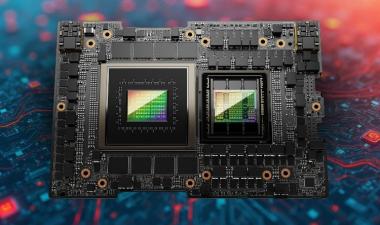Chip Observer October 2025
AI, Power, and the Global Chip Race
5 Min Read November 2, 2025
To view the Chip Observer, you must be a registered TechInsights Platform user — sign in or create a free account to access the full report, or fill out the form above to get started.
The semiconductor industry is running hotter than ever — and nowhere is that more clear than in the October 2025 edition of Chip Observer. This month’s issue tracks how AI’s insatiable hunger for compute power is redrawing the global chip landscape, from trillion-dollar partnerships to the physics of power itself.
AI Investment Surge: NVIDIA, AMD, and OpenAI Redefine Scale
AI investment has entered a new dimension. NVIDIA announced up to $100 billion in funding for OpenAI, alongside $5 billion in Intel, $1 billion in Nokia, and $900 million to acquire Enfabrica’s AI networking technology and team. AMD is set to deliver 6 gigawatts of GPU compute to OpenAI, earning warrants for up to 160 million shares, while partnering with Oracle and HPE to develop the Department of Energy’s Lux and Discovery supercomputers.
Meanwhile, OpenAI’s transformation into a $500 billion for-profit corporation, with Microsoft owning 27%, marks the full industrialization of artificial intelligence. The once-research-driven pursuit of AI has become a global economic engine, fueled by unprecedented capital and competition.
Intel, SoftBank, and NVIDIA Align Around AI Infrastructure
Long-time rivals are finding common ground as AI infrastructure becomes the new battleground. The U.S. government has taken a 9.9% equity stake in Intel, converting CHIPS Act grants into $9 billion in direct funding. SoftBank has added another $2 billion investment as it closes its Ampere Computing acquisition. In a surprising twist, NVIDIA and Intel have agreed to co-develop datacenter CPUs and SoCs—signaling a new phase of cooperation that blends competition with shared strategic interests.
Manufacturing Momentum: HBM4 and Mergers
AI’s demand for high-bandwidth memory shows no signs of slowing. SK hynix has begun mass production of HBM4, delivering a staggering 2 terabytes per second of bandwidth and 64 gigabytes per stack. GlobalFoundries has introduced its 22FDX+ RRAM platform, while SkyWorks and Qorvo have announced the consolidation of U.S. fabs alongside a merger designed to streamline RF manufacturing. Together, these moves highlight how the manufacturing ecosystem is adapting to meet the explosive growth of AI hardware.
Global Chip Politics Heat Up
The geopolitical dimension of the chip race continues to intensify. A fragile truce between Trump and Xi has delayed rare-earth export controls for a year, but tensions remain high. China’s ban on NVIDIA’s H20 AI GPUs, the Netherlands’ seizure of Nexperia, and Japan’s $3.6 billion subsidy to Micron are reshaping global semiconductor supply lines in real time.
Editorial Spotlight: The Mask Comes Off
In this month’s editorial, “The Mask Comes Off,” Chip Observer examines AI’s most critical constraint: electricity. Datacenter energy demand already accounts for 4% of U.S. power consumption and could double by 2030. Hyperscalers are responding with over $200 billion in AI capital expenditures for 2025, making power generation, cooling, and grid access the new cornerstones of semiconductor strategy.
The Chip Observer reveals an industry transformed by AI ambition, geopolitical shifts, and power physics.









